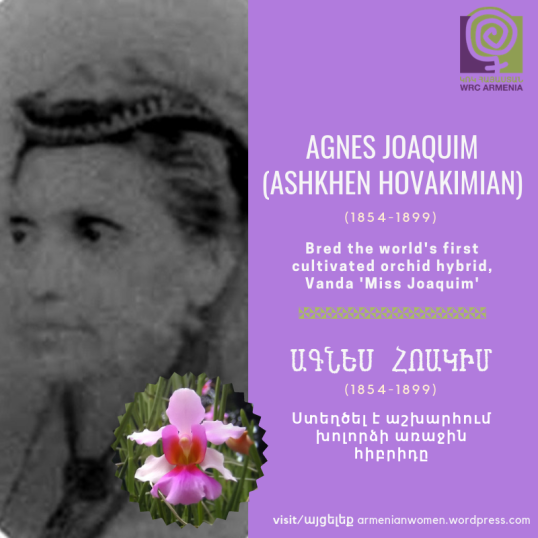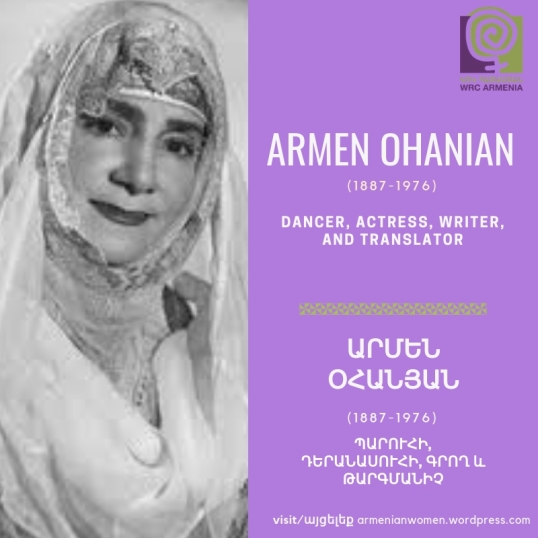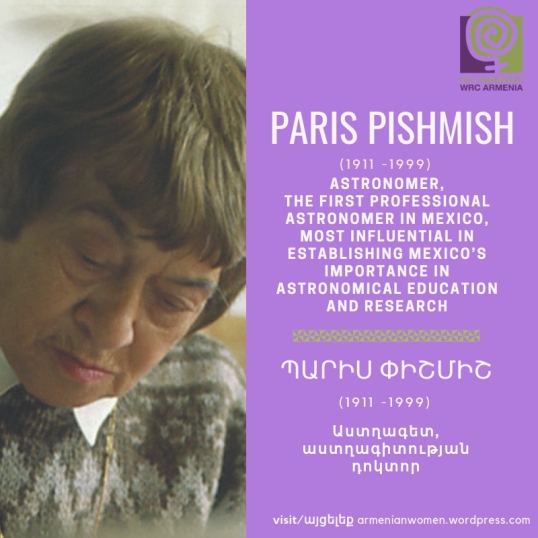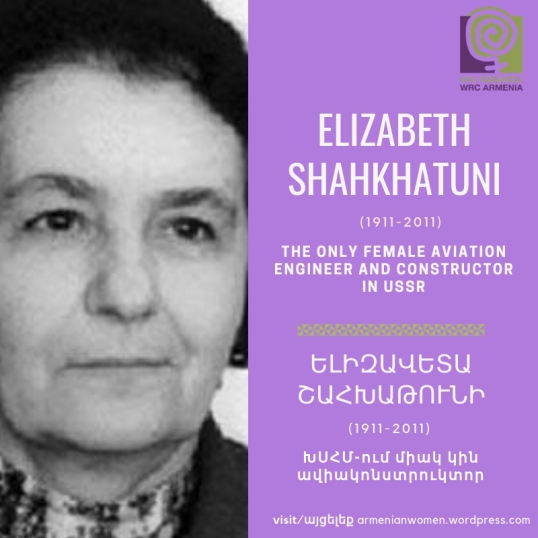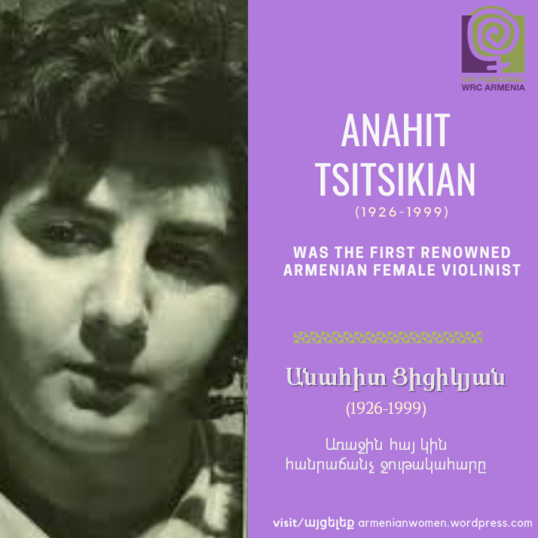Elbis Gesaratsian – Էլբիս Գեսարացեան
First female Armenian journalist and editor of the first Armenian Newspaper for Women “Guitar”.
“The First Western Armenian periodical edited and published by a woman was Elbis Gesaratsian’s monthly called Gitar (Guitar), which ran for seven months from 1 August 1862. This short-lived periodical may have served as a model for subsequent women writers, but it was being published in progressive periodicals that invited women’s contributions that enabled Armenian women to express their views and discuss issues, including women’s rights, in a public forum read by both women and men.” – (Source: Victoria Rowe, Armenian Writers and Women’s Rights in Constantinople, Aspasia, vol 2, 2008)
She died in Alexandria in 1911.
In her book titled “Namagani ar İntertsaser Hayuhis” (Letters to Armenian Educated Women’s Foundation) Elbis Gesaratsyan wrote on such female issues as woman and education, and sexual discrimination.
“You may have often experienced women who more thoughtful, more foresighted and more hard-working than their husbands; but they knowingly and blindly succumb to men who do not know the right way to do something; because the woman should be a bird without a tongue and the man, even if he is a crow, he must sing and rule with pride. Yes, my sister, these are my thoughts. Our opinions should blossom. Capable persons should take this as a duty, should activate the sluggish brains in lawful ways, should be awake in holding on to her the freedoms and should be eager to educate ourselves and encourage other women to educate themselves. We should create reading rooms and societies and possess such knowledge addressing hearts and brains so that we take steps on the way of development and be counted as human beings.”
Elbis Gesaratsian, Namagani, 1879.
Sources: Lerna Ekmekçioğlu; Melissa Bilal, Bir Adalet Feryadı – Osmanlı’dan Türkiye’ye Beş Ermeni Feminist Yazar 1862-1933, Aras Yayınevi, İstanbul, 2006, ss. 22-34.
http://www.istanbulkadinmuzesi.org/en/elbis-gesaratsyan
Photo: Aras Publishing
Էլբիս Գեսարացեան
(1830-1910)
Կանանց համար նախատեսված «Կիթառ» թերթի առաջին կին լրագրողը և խմբագիրը։
«Կանանց համար նախատեսված առաջին արևմտահայ պարբերականը՝ «Կիթառը» խմբագրվում և թողարկվում էր կնոջ կողմից․ Էլբիս Գեսարացյանի ղեկավարությամբ պարբերականը գործունեությունը սկսել է 1862թ․ օգոստոսի 1-ից և այն շարունակել է հաջորդիվ յոթ ամիսներին։ Չնայած նրան, որ պարբերականը կարճ կյանք ունեցավ, այս կարճ ժամանակահատվածում այն հասցրեց հայ կին գրողների համար ծառայել որպես օրինակ, որովհետև այն հնարավորություն էր տալիս նրանց տպագրվել առաջադեմ պարբերականում, արատահայտել իրենց կարծիքները, քննարկել իրենց հուզող խնդիրները՝ ինչպիսիք էին կանանց իրավունքները, ավելին, սա մի հանրային հարթակ էր, որ ընթերցվում էր և՛ կանանց, և՛ տղամարդկանց կողմից։»
Նա մահացել է 1911թ-ին Ալեքսանդրիայում։
Իր «Նամագանի ար ընթերծասեր հայուհիս» գրքում, Էլ․ Գեսարացեան գրել է կանանց կրթության հիմնախնդրի, ինչպես նաև սեռական խտրականության մասին։
«Դուք հանդիպած կլինեք կանանց, ովքեր ավելի բանիմաց, շրջահայաց և աշխատասեր են քան իրենց ամուսինները, բայց նրանց գիտակցաբար և կուրորեն տեղի են տալիս ամուսիններին, ովքեր ունակություններով զիջում են իրենց․ կինը պիտի թռչուն լինի առանց լեզվի, իսկ տղամարդը, եթե նույնիսկ ագռավ է, պիտի երգի ու հպարտությամբ իշխի։ Այո՛, իմ քու՛յր, այս բոլորը իմ մտքերն են։ Մեր կարծիքները պիտի փթթեն։ Ունակ մարդիկ պիտի իրենց վրա վերցնեն այս պատասխանատվությունը, արդարացի ճանապարհներով արթնացնեն բթացած ուղեղները, զգոն լինեն իրենց անկախությունը պահելու հարցում, և պետք է ցանկանան իրենք կրթվել ու քաջալերեն այլ կանանց կրթվել։ Մենք պիտի ստեղծենք կանանց համայնքներ որոնք կկարողանան հասցեագրել այս սրտերին ու ուղեղներին հուզող խնդիրները, որ մենք քայլեր ձեռնարկենք, որոնք զարգացման կտանեն և կպայքարեն, որ մենք մարդահաշիվ լինենք»:


